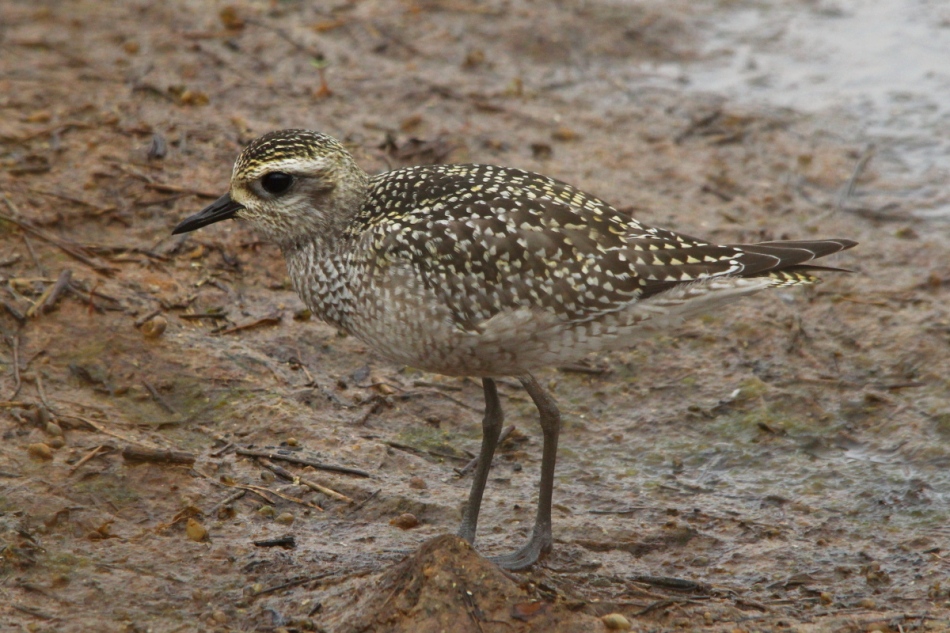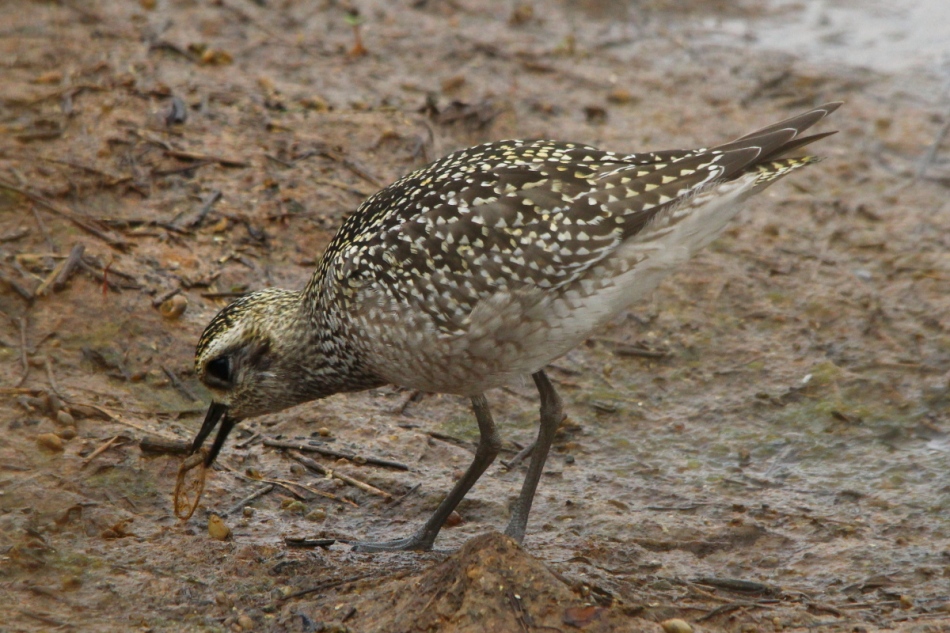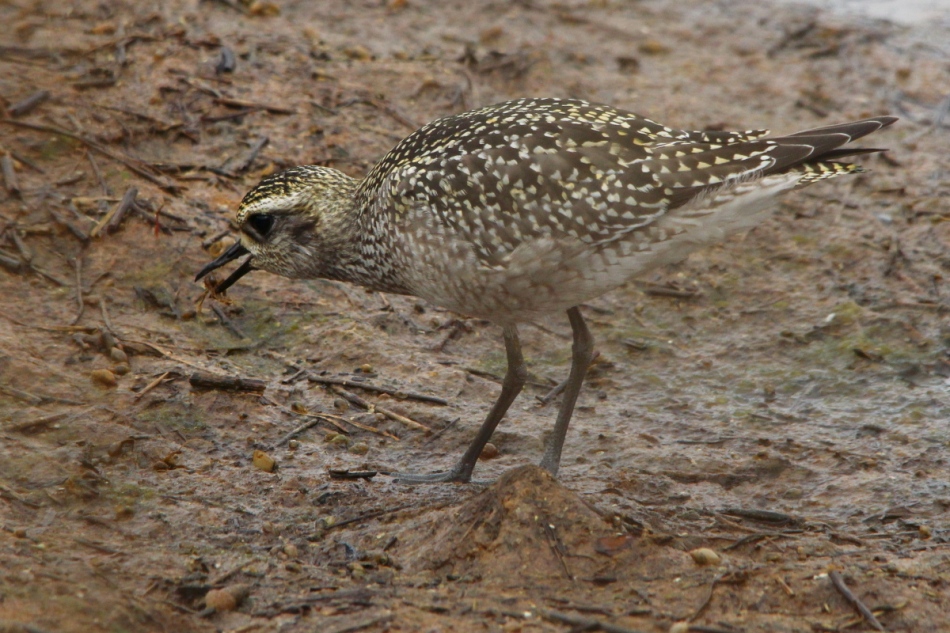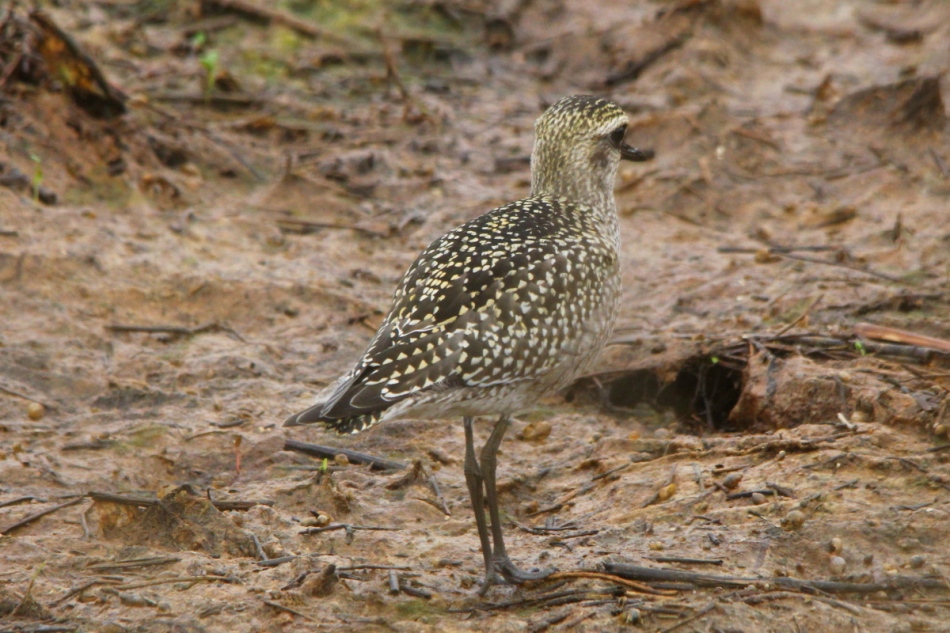American Golden-Plover, Pluvialis dominica
Note: this post, while published, is a work in progress, as are all posts in this series, My Photo Life List. My goal is to photograph every species of bird that is seen on a regular basis here in Michigan, working from a list compiled by the Michigan chapter of the Audubon Society. This will be a lifelong project, that I began in January of 2013, and as I shoot better photos of this, or any other species, I will update the post for that species with better photos when I can. While this series is not intended to be a field guide per se, my minimum standard for the photos in this series is that one has to be able to make a positive identification of the species in my photos. The information posted here is from either my observations or the Wikipedia, the online free encyclopedia, however, I have personally shot all the photos appearing in this series.
American Golden-Plover, Pluvialis dominica
The American golden plover is a medium-sized plover.
During the breeding season, adults are spotted gold and black on the crown, back and wings. Their face and neck are black with a white border; they have a black breast and a dark rump. The legs are black. During the winter months, the adults have light barring on chest, sides, and flanks, and more distinct yellow edges and spots on feathers of crown, back, and wings. Juveniles are similar to winter adults
These birds forage for food on tundra, fields, beaches and tidal flats, usually by sight. They eat insects and crustaceans, also berries.
The breeding habitat of American golden plover is Arctic tundra from northern Canada and Alaska. They nest on the ground in a dry open area. They are migratory and winter in southern South America. They follow an elliptical migration path, northbound birds pass through Central America about January–April and stage in great numbers in places like Illinois before their final push north. In fall, they take a more easterly route, flying mostly over the western Atlantic and Caribbean Sea to the wintering grounds in Patagonia. The bird has one of the longest known migratory routes of over 25,000 mi (40,000 km). Of this, 2,400 mi (3,900 km) is over open ocean where it cannot stop to feed or drink. It does this from body fat stores that it stocks up on prior to the flight.
Large numbers were shot in the late 19th century and the population has never fully recovered.
On to my photos:
This is number 173 in my photo life list, only 177 to go!
That’s it for this one, thanks for stopping by!











Great pictures. What an amazing bird to migrate such huge distances and then stop off on Lake Michigan. Well done to get this one.
LikeLike
January 26, 2015 at 5:08 pm
Thank you Brandy! The distances traveled by many small birds during migration is astounding!
LikeLiked by 1 person
January 27, 2015 at 4:50 pm
Excellent shots of this pretty bird. I find it amazing that some birds can fly so far twice a year! They must be just feather and bone when they get to where they are going despite the half-way stop-off. The bird-skin and egg collectors of the 19th century have a lot to answer for. Most of them had no idea what they were doing and those that did didn’t care. I have yet to see a European Golden Plover. I hear they overwinter in large flocks near here but look like plain greenish waders without their breeding gold and I probably wouldn’t recognise one if I saw it!
LikeLike
January 26, 2015 at 9:50 am
Thanks Clare! It’s hard to believe now that so many species became extinct, or close to it, because birds were hunted only for their feathers.
LikeLiked by 1 person
January 26, 2015 at 12:27 pm
If I ever stumble across one of these gorgeous birds, I’m pretty sure I could id it, thanks to these excellent photos. This may be my new favorite bird. 😉
LikeLike
January 26, 2015 at 9:43 am
Thanks Judy! You may not recognize one if you were to see it in the spring or summer, then, they have black breasts and the gold is more pronounced on their backs. But, they seldom pass through Michigan in the spring, only in the fall.
LikeLike
January 26, 2015 at 12:25 pm
PS. This may be your new favorite for now, until I post the next two species. 😉
LikeLike
January 26, 2015 at 12:28 pm
That’s a pretty bird. Nice of him to pose so well for you!
LikeLike
January 26, 2015 at 7:44 am
Thanks Allen! Those photos were shot during multiple trips to Muskegon trying to catch the plovers for good photos. On cloudy days, I could get close to them for low light photos, but on sunny days, they stayed well away from me, the way it always seems to go. 😉
LikeLike
January 26, 2015 at 7:59 am
Very nice shots of a bird I have not yet been fortunate enough to see.
LikeLike
January 26, 2015 at 6:47 am
Thanks Bob! Because of their migration patterns, I only see them in the fall, not the spring when they’re in their breeding plumage, darn.
LikeLike
January 26, 2015 at 6:49 am
I really like this bird and you’ve given us some great angles. I agree with Gunta. They are real cuties! I have plovers called “Masked Lapwings” in my street. They don’t look much like your golden plover. They actually have spurs on their wings to help defend nests and they will pretend they have a broken wing to lure predators away. Somehow they manage to raise chicks despite their nests being very exposed and the chicks spending most of the time on the road! I will try to share some pics with you but they won’t be anywhere near as good as these lovely golden plover shots! Looking forward to learning about another new bird. 🙂
LikeLike
January 26, 2015 at 5:28 am
Thank you Jane! Here, we have a species of bird called the killdeer, which sounds very much like your masked lapwings. All shorebirds nest in the open, but most nest near water. The killdeer will nest about anywhere, and they and their chicks often “play” in the streets. They will also use the broken wing ploy of leading predators away from their chicks.
LikeLiked by 1 person
January 26, 2015 at 7:22 am
What a bird, such beautiful markings so well displayed in your excellent pictures.
LikeLike
January 26, 2015 at 3:02 am
Thank you Susan!
LikeLike
January 26, 2015 at 6:23 am
Wonderful images of these little cuties. That last one is perfect with the water for background and contrast.
LikeLike
January 26, 2015 at 12:29 am
Thank you Gunta!
LikeLike
January 26, 2015 at 6:23 am
I have a photo request if you have any of this species – any good pictures of a Dunlin? I think I have had these birds come through the farm here.
LikeLike
January 26, 2015 at 12:11 am
Thanks Lavinia! I don’t know if you’ll think that these are good, but I have already featured dunlin earlier.
https://quietsolopursuits.wordpress.com/2013/07/23/dunlin-calidris-alpina/
LikeLike
January 26, 2015 at 6:18 am
Those are great pictures! It does look a lot like the birds I saw here, although my impression was that our birds had bills with a slightly greater curvature, and a little bigger than a starling. Memory is a tricky thing though…I’ll try to get a better look when they come through again.
LikeLike
January 27, 2015 at 12:15 am
Thanks Lavinia! Other than gulls, I think that the small shorebirds are the toughest to ID, they all look alike at first. Little things like the length and curvature of their bill, or the color of their legs are all one has to go by. But, after you’ve seen and learned a few of them, it does get easier.
LikeLike
January 27, 2015 at 4:54 pm